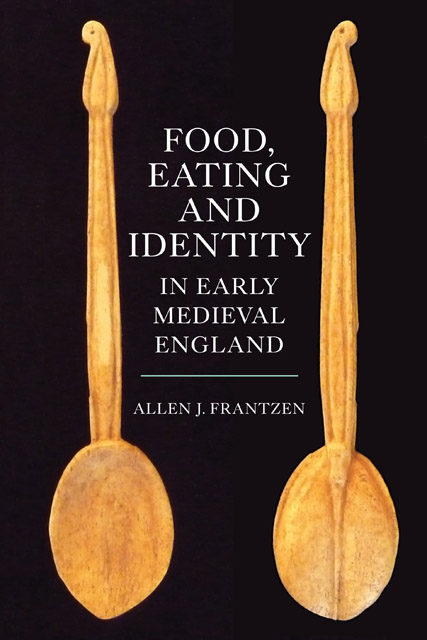10 - Fasting and the Anglo-Saxon “Fish Event Horizon”
Published online by Cambridge University Press: 14 February 2023
Summary
Many of the foods known to the Anglo-Saxons remained the same throughout the Anglo-Saxon period. Studies of fauna note changes from settlement to settlement and period to period, but they generally report more or less beef, pork, or mutton. Animal bones are among the factors that reflect settlement wealth. Older animals were killed for consumption when they became less efficient at traction, the chief task they performed. Butchery of young animals is evidence that their value as food exceeded their work capacity – obviously a sign of wealth. Anomalies in patterns of animal bone distribution that show a preponderance of one species are taken as indications of high status. At the East Anglian site of Wicken Bonhunt, there was a high proportion of pig bones; Wicken Bonhunt might have been a market or perhaps a royal farm. Another sign of a site’s status is the presence of fish bones. Delicate and difficult to transport and store, fish are no ordinary food. Whether from marine or freshwater sources, fish were not a constant factor in the Anglo-Saxon diet. The fish is an ancient Christian symbol, and much that has been written about fish has been connected to fasting. In the City of God Augustine commented on an acrostic that linked the first letters of five Greek words to form the Greek ichthus, which means fish. Augustine saw the fish as an allegory for Christ, who “was able to remain alive – that is, without sin – in the abyss of our mortal condition, in the depths, as it were, of the sea.” Fish have long been regarded as a fasting food, but were formerly seen as a luxury, as they were in Anglo-Saxon England and in the later Middle Ages. How can we reconcile this discrepancy? Arguments about the place of fish in relation to fasting present an opportunity to compare evidence from fish bone assemblies to texts that determined how and when the Anglo-Saxons fasted.
Anglo-Saxon Christians fasted several times a year. The fasting diet of lay people seems to have consisted chiefly of bread, water, and some greens. Textual details for lay fasting diets are sparse. We know more about fasting in monasteries.
- Type
- Chapter
- Information
- Food, Eating and Identity in Early Medieval England , pp. 232 - 245Publisher: Boydell & BrewerPrint publication year: 2014



